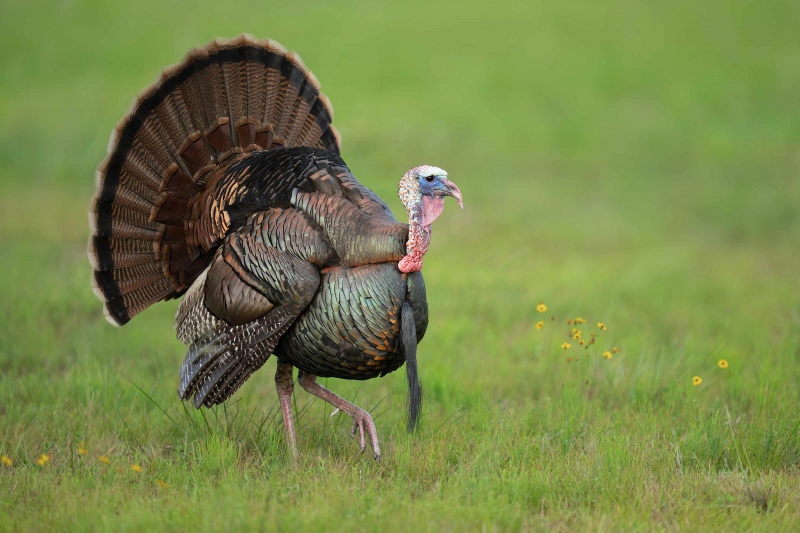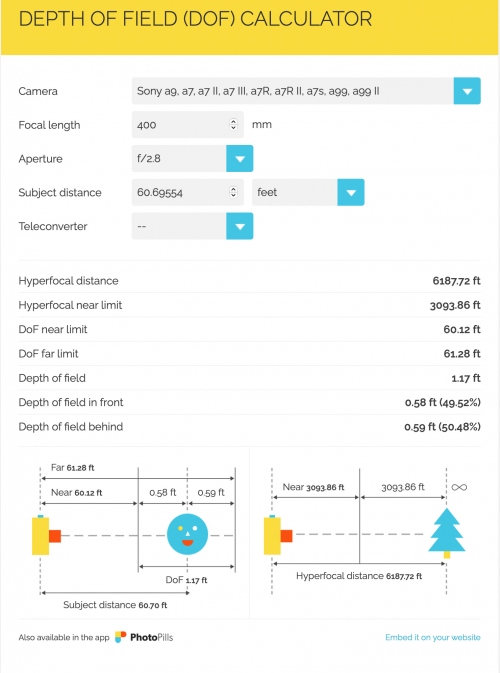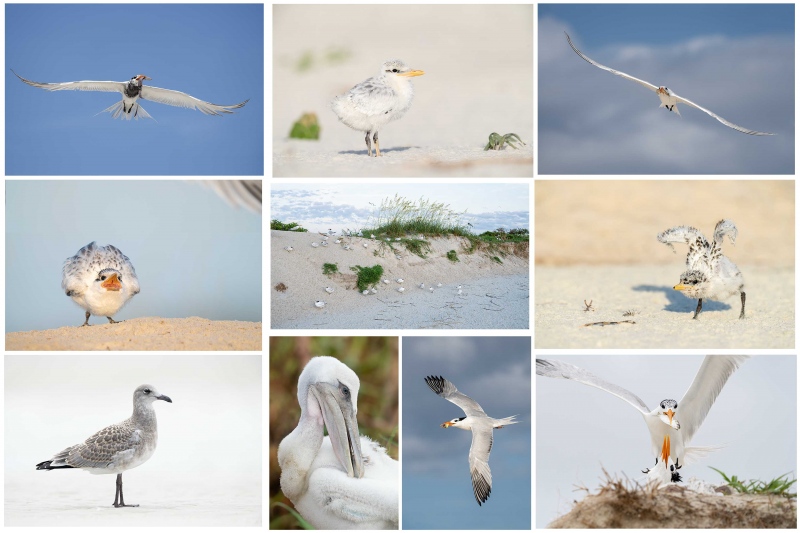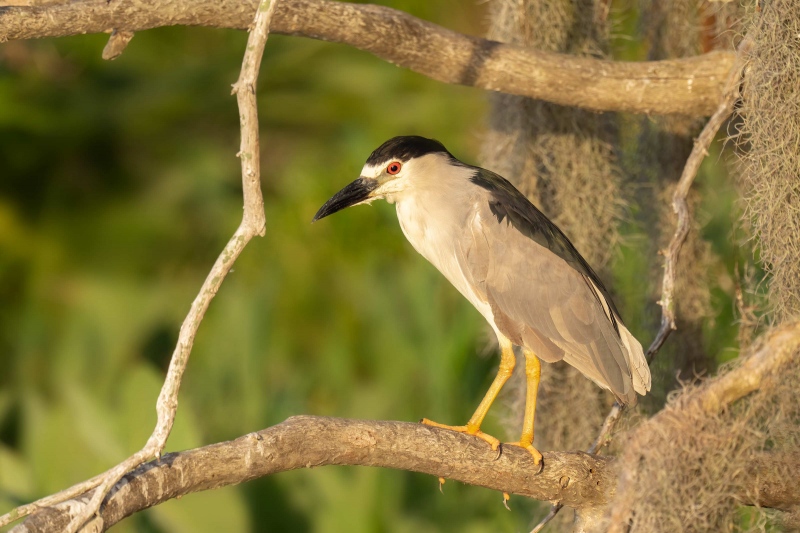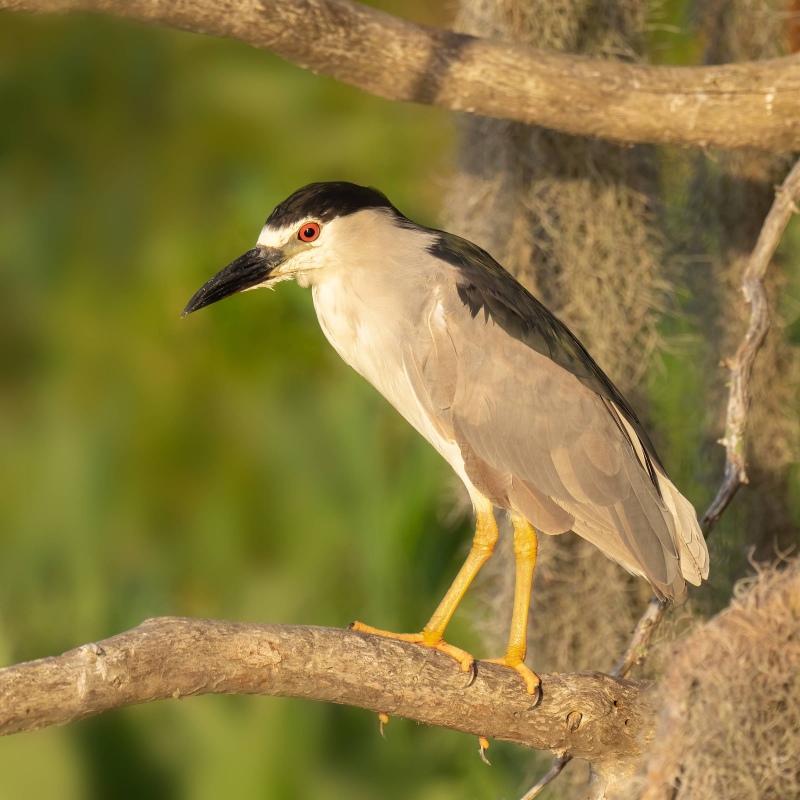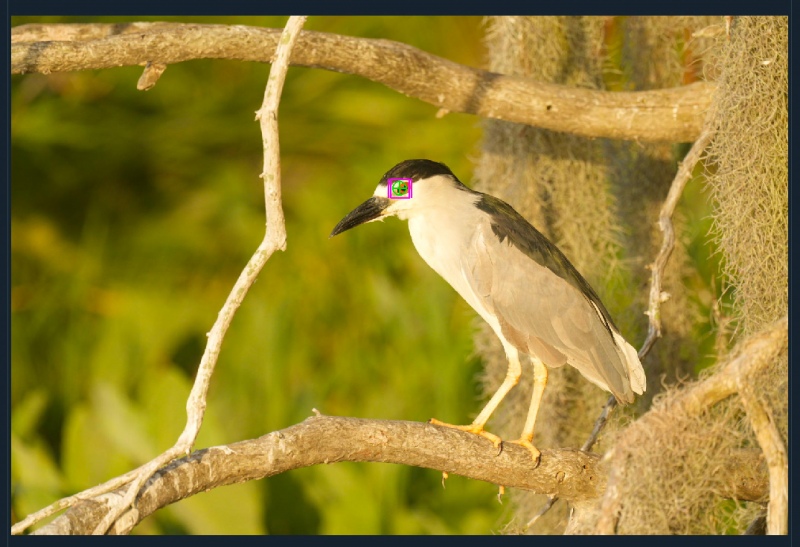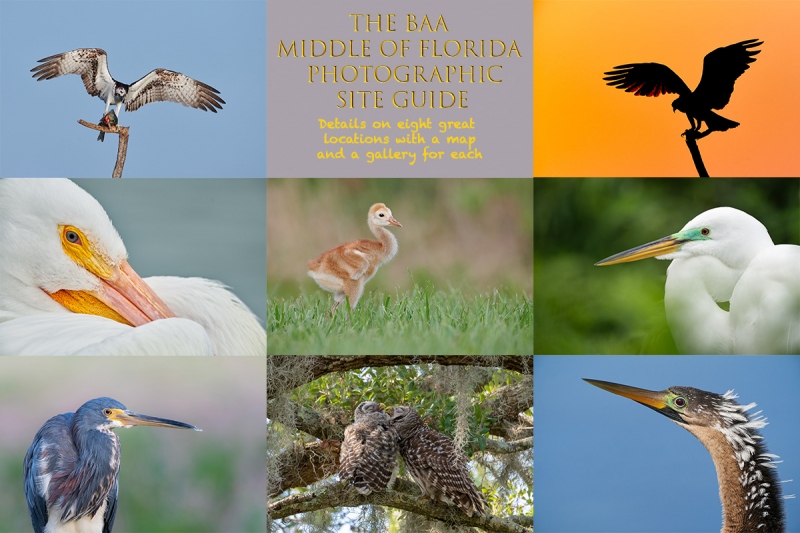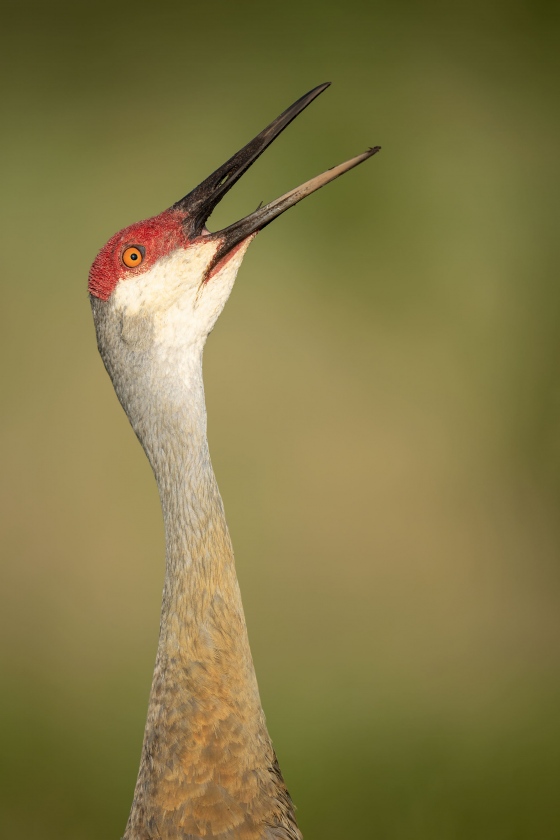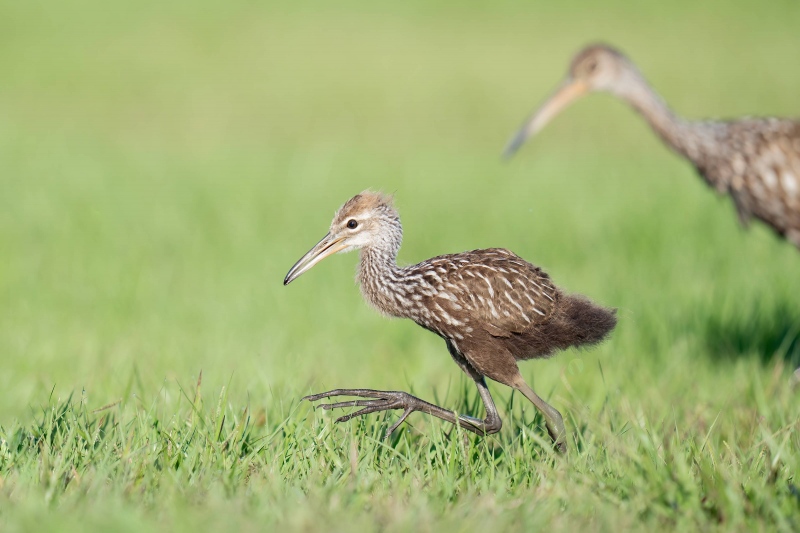What’s Up?
It actually was partly cloudy at ILE on Friday morning. I’ve been checking on the Killdeer nest every day and am happy to report that there is always one adult bird sitting peacefully on the two eggs. There was so much action in the North Field that I did not head south until 8:15am. The tom Wild Turkey was displaying again. I spent some time with the not-such-a-baby anymore single crane colt and had an Osprey on a dead cabbage palm stump dining on an almost-whole fish.
Today is Saturday 22 May 2022. In total disbelief, I just finished watching the Miami Heat defeat the younger, stronger, Boston Celtics in Game 6 of the NBA’s Eastern Conference playoff series. The Celtics had totally destroyed the Heat in Games five and six. Miami’s superstar, Jimmy Butler, has been hobbled by an injured right knee. And Tyler Herro, NBA sixth man of the year, missed his third game in a row with a strained groin. Game 7 will be on Sunday night. The winner of Game 7 will face the Golden State Warriors for the championship.
The forecast for this morning is for partly cloudy with scattered thunderstorms beginning around 8am. I will surely be heading down to the lake early. Wherever you are and whatever you are doing, I hope that you too have a great day. This blog post took about 90 minutes to to prepare and makes seventy-four days in a row with a new one.
Please remember to use the B&H and Amazon links that are found on most blog pages and to use the BIRDSASART discount code at checkout when purchasing your new gear from Bedfords. Please, also, consider joining a BAA IPT. You will be amazed at how much you will learn!
BIRDS AS ART Image Optimization Service (BAA IOS)
Send a PayPal for $62.00 to birdsasart@verizon.net or call Jim at 863-692-0906 and put $62.00 on your credit card. Pick one of your best images and upload the raw file using a large file sending service like Hightail or DropBox and then send me the link via e-mail. I will download and save your raw file, evaluate the exposure and sharpness, and optimize the image as if it were my own after converting the raw file in Adobe Camera Raw. Best of all, I will make a screen recording of the entire process and send you a link to the video to download, save and study.
Selling Your Used Photo Gear Through BIRDS AS ART
Selling your used (or like-new) photo gear through the BAA Blog is a great idea. We charge only a 5% commission on items priced at $1,000 or more. With items less than $1000, there is a $50 flat-fee. One of the more popular used gear sites charged a minimum of 20%. Plus assorted fees! Yikes. They went out of business. And e-Bay fees are now up to 13%. If you are interested, please click here, read everything carefully, and do what it says. To avoid any misunderstandings, please read the whole thing very carefully. If you agree to the terms, please state so clearly via e-mail and include the template or templates, one for each item you wish to sell. Then we can work together to get your stuff priced and listed.
Stuff that is priced fairly — I offer pricing advice only to those who agree to the terms — usually sells in no time flat. Over the past years, we have sold many hundreds of items. Do know that prices for used gear only go in one direction. Down. You can always see the current listings by clicking here or on the Used Photo Gear tab on the orange-yellow menu bar near the top of each blog post page.
New Listings
Canon EF 400mm DO II IS Lens with Extras!
Sale Possibly Pending
IPT veteran Sandra Calderbank is offering a Canon 400 mm DO II IS lens in like-new condition for $4498.00. The sale includes a Really Right Stuff replacement foot, an AquaTech soft lens cap, a LensCoat, the lens trunk, the lens strap, the rear cap, the original tripod foot, and insured ground shipping via major courier to lower-48 US addresses only. Your item will not ship until your check clears unless other arrangements are made.
Please contact Sandra via e-mail or by phone at 1-828-412-1047 Eastern time zone.
I owned and used and loved the 400 DO II when I shot with Canon and found a way to take it on most trips. I took it to Scotland and Nickerson Beach and San Diego. It served me well as my (lighter!) big gun on several Galapagos and Southern Ocean (the Falklands and South Georgia) trips. It is a killer lens for flight photography with or without the 1.4X III TC. It is razor-sharp with the 2X on static subjects and skilled folks have had amazing success hand holding it with the 2X III TC for flight and for action. And it will rock with an R5 or an R3 and both TCs. artie
Canon 100-400L IS II Lens with Extras
BIRDS AS ART Record Low Price (with the replacement foot)
Sale Pending
IPT veteran Sandra Calderbank is offering a Canon 100-400L IS II lens in like new condition for a BAA record low of $1298.00. The sale includes the soft case, the original product box and everything that came in it, a Really Right Stuff replacement foot, a LensCoat, the original tripod foot, and insured ground shipping via major courier to lower-48 US addresses only. Your item will not ship until your check clears unless other arrangements are made.
Please contact Sandra via e-mail or by phone at 1-828-412-1047 Eastern time zone.
This incredibly versatile zoom lens — with its amazing .98-meter close focus — was my favorite Canon telephoto zoom lens ever. By far. It is easy to hand hold, great for tight portraits, for birds in flight, for quasi-macro stuff, and lots more. For flight, it is fabulous with an R5! This lens sells new for $2399.00 and is out of stock in many places. artie
Canon EF 70-200 f/2.8 II L IS Lens
BIRDS AS ART Record Low Price
Sale Pending within two hours of listing
IPT veteran Sandra Calderbank is offering a Canon EF 70-200 f/2.8 II L IS lens in near-mint condition for a BAA record-low $648.00. The sale includes the original product box, front and rear caps, soft case, and insured ground shipping via major courier to lower-48 US addresses only. Your item will not ship until your check clears unless other arrangements are made.
Please contact Sandra via e-mail or by phone at 1-828-412-1047 Eastern time zone.
First off, note as the Canon RF 70-200mm f/2.8 L IS lens does not accept a teleconverter, Canon mirrorless folks are much better off the an EF 70-200 and an adapter.
The versatile 70-200mm f/2.8 lenses have long been big favorites of many nature photographers. They are great for landscapes especially with fall color peaking in many areas. I have used this lens with Canon and Nikon and SONY. I used my Canon version to photograph granddaughter Maya’s dance recitals and to create bird-scapes and pre-dawn blast-off blurs at Bosque del Apache NWR in New Mexico. They are fast and sharp and have 1000 uses. The 70-200 f/2.8 lenses are a specialty lens for bird photographers. Like the bad little child, when they are good, they are really, really good! I’ve used mine mostly for flight photography at point blank range where their performance is unmatched, especially in low light. I’ve killed with these lenses on the gannet boat in the UK, in Homer for eagles, for pre-dawn and blizzard blast-offs at Bosque, and at Merritt Island on feeding sprees right next to the road. Lenses in this class are easily hand holdable by just about everyone. artie
ps: To see what the 70-200 zoom lenses can do, see the blog post here.
Canon RF Extender 1.4X (teleconverter)
IPT veteran Sandra Calderbank is offering a Canon RF Extender 1.4X (teleconverter) in like-new condition for $399.00. The sale includes the soft case, original product box, front and rear caps and insured ground shipping via major courier to lower-48 US addresses only. Your item will not ship until your check clears unless other arrangements are made.
Please contact Sandra via e-mail or by phone at 1-828-412-1047 Eastern time zone.
The RF 1.4X extender sells new for $499.00. Grab Sandra’s rarely used copy and put $100.00 in your pocket. artie
Canon Control Ring Mount Adapter EF-EOS R
Sale Pending
IPT veteran Sandra Calderbank is offering a Canon Control Ring Mount Adapter EF-EOSR in like-new condition for $159.20. The sale includes the soft case, original product box, front and rear caps and insured ground shipping via major courier to lower-48 US addresses only. Your item will not ship until your check clears unless other arrangements are made.
Please contact Sandra via e-mail or by phone at 1-828-412-1047 Eastern time zone.
This adapter lets you use a Canon mirrorless body on your EF lenses. This sophisticated adapter incorporates a customizable Control Ring, the same as that on native RF-mount lenses, for intuitively adjusting exposure settings, such as ISO, aperture, and exposure compensation. artie
Price Drop
Canon EOS 7D Mark II with a great extra!
Price Reduced $100.00 28 May 2021
IPT veteran Sandra Calderbank is offering a Canon EOS 7D Mark II in like-new condition with only 4504 shutter actuations for a very low $549.00 (was $649.00) . The sale includes one battery and the charger, the strap, the original product box, and everything that came in it, a Really Right Stuff Modular Sliding L-Plate (RTS B702-L Set — a $150.00 value), and insured ground shipping via major courier to lower-48 US addresses only. Your item will not ship until your check clears unless other arrangements are made.
Please contact Sandra via e-mail or by phone at 1-828-412-1047 Eastern time zone.
If you are looking to get started with a Canon dSLR, Sandy’s 7DII is for you. Both Patrick Sparkman and I used and loved the 7D Mark II until about two years ago when we both committed to using full-frame Canon bodies. We both made some truly great images with it. Two of my three 2016 Nature’s Best honored entries were created with the 7D II, one still, and one video. The 7D Mark II is one of the greatest-ever values in a digital camera body. artie
|
|
|
This image was created on 27 May 2022 down by the lake at ILE. Standing in the North Field, I used the handheld Sony FE 400mm f/2.8 GM OSS lens and The One, the Sony Alpha 1 Mirrorless Digital Camera). The exposure was determined via Zebra technology with ISO on the Thumb Dial. ISO 640. 1/2000 sec. at f/2.8 (wide open) in Manual mode. When evaluated in RawDigger, the raw file exposure was determined to be about 1/3 stop under. AWB at 7:36:27am on a cloudy-bright morning. Tracking: Spot S AF-C with Bird Face/Eye detection enabled performed to perfection. Be sure to click on the image to enjoy a high-res version. Image #1: Wild Turkey tame displaying |
Image Design Question
Would you have removed the two, tiny, yellow tickseed blossoms right on the frame-edge in the lower left corner? Why or why not?
Depth of Field Question
How is it possible that the entire turkey is covered by the depth of field at f//2.8? Scroll down for the answer.
Handholding The Sony 400mm f/2.8 Lens (AKA Fat Boy)
I am becoming more enamored with the Sony 400mm f/2.8 lens (AKA Fat Boy) every time I use it. With the lens being so back heavy, it is relatively easy to handhold considering that it weighs 6.864 lbs. (6 lbs.13.8 oz.) with the hood on and the original lens foot replaced with the CRX-5 Ultra Low Foot. After nearly 39 years of bird photography, I learned something new this morning when I put Fat Boy on the kitchen scale. The published weight of a super-telephoto lens, 6.4 pounds in the case of The Sony 400 f/2.8, does not include the weight of the hood. Who’d a thunk it?
In any case, at 6.864 lbs., the 400 f/2.8 weighs only 1.848 pounds more than The Sony 200-600 with the hood on and the original foot removed to save weight while handholding. The latter weighs in at 5.016 lbs.
The Speed Advantage
Until I began working with Fat Boy just a few days ago, I had not realized how huge an advantage the f/2.8 speed would be it. Across the board, it allows for the use of crazy-high shutter speeds and saves on ISO. The higher shutter speeds are great for handholding. There will be lots more on this great lens coming soon. Please remember, however, that for me, Fat Boy is an auxiliary lens, undoubtedly somewhat of an extravagant purchase.
|
|
PhotoPills Depth of Field (DOF) Calculator screen capture for today’s featured image |
PhotoPills Depth of Field (DOF) Calculator
The entire turkey is covered by the depth of field at f//2.8 because I was far from a large subject using a relatively short focal length (as compared to 600 or 840mm). The PhotoPills Depth of Field (DOF) Calculator screen capture above shows that the total DOF is 1.17 feet. Though the turkey is a very large bird, 1.17 feet was just about enough to cover the entire bird. If you wanted to be picky, you could note that the range of sharp focus barely falls off on the tips of the feathers on the far side of the bird’s spread tail.
Note that stopping down to f/4 would have increased the total DOF to 1.65 feet. Note also that choosing any full frame camera body will yield correct results. Also, I learned the exact distance to the subject in A7INFO.
The Lesson
If the entire bird looks sharp in the viewfinder, it will be sharp in the final image. There is no need to stop down.
|
|
|
Click on the composite image to enjoy the incredible quality of the hi-res JPEG. Clockwise from upper left clockwise and back around to the center: Royal Tern in flight with squid for chick; Royal Tern chick on beach; Royal Tern in flight with shrimp for young; Royal Tern chick — double overhead wing stretch; Royal Tern landing with greenback for chick; Royal Tern in flight with juvenile mahi mahi for chick; Brown Pelican — large chick preening; Laughing Gull in fresh juvenal plumage; Royal Tern chick begging; Many Royal Terns with many chicks on face of dune. |
Jacksonville IPT: #1: 4 FULL DAYS — the afternoon of 16 June thru the morning of MON 20 June 2022: $2,099.00. (Limit 6 photographers)
Jacksonville IPT #2: 4 FULL DAYS — the afternoon of FRI 1 JULY thru the morning of TUES 5 July 2022: $2099.00 (Limit 6 photographers)
Jacksonville IPT #3: 4 FULL DAYS — the afternoon of FRI 15 JULY thru the morning of TUES 19 July 2022: $2099.00 (Limit 6 photographers/Openings: 5)
Ride with me: add $200.00. I do not like to disappoint: each trip will run with one participant. If necessary.
I first visited the breeding bird colony at Jacksonville in late June 2021. I was astounded. There were many thousands of pairs of Royal Terns nesting along with about 10,000 pairs of Laughing Gulls. In addition to the royals, there were some Sandwich Terns nesting. And there are several dozen pairs of Brown Pelicans nesting on the ground. Flight photography was non-stop astounding. And photographing the tern chicks was relatively easy. Folks could do the whole trip with the Sony 200-600, the Canon 100-500 RF, or the Nikon 500 PF or 200-500 VR. With a TC in your pocket for use on sunny days. Most of the action is within 100 yards of where we park (on the beach). As with all bird photography, there are times when a super-telephoto lens with either TC is the best tool for the job.
Morning sessions will average about three hours, afternoon sessions about 1 1/2 hours. On cloudy mornings with favorable winds, we may opt to stay out for one long session and skip the afternoon, especially when the afternoon forecast is poor. Lunch is included on the first three days of the IPT and will be served at my AirBnB. After the first lunch there will be an introductory program. On days two and three we will do image review and Photoshop after lunch.
We will be based somewhere west and a bit north of Jacksonville where there are many AirBnB possibilities. The deposit is $599.00. Call Jim at the office any weekday at 863-692-0906 to pay by credit card. Balances must be paid by check.
What You Will Learn on a Jacksonville IPT
- 1- First and foremast you will learn to become a better flight photographer. Much better.
- 2-You will learn the basics and fine points of digital exposure. Nikon and Canon folks will learn to get the right exposure every time after making a single test exposure, and SONY folks will learn to use Zebras so that they can be sure of making excellent exposures before pressing the shutter button.
- 3- You will learn to work in Manual exposure mode even if you fear it.
- 4- You will learn to evaluate wind and sky conditions and understand how they affect bird photography, especially the photography of birds in flight.
- 5- You will learn several pro secrets (for each system) that will help you to become a better flight photographer.
- 6- You will learn to zoom out in advance (because the birds are so close!) 🙂
- 7- You will learn how to approach free and wild birds without disturbing them.
- 8- You will learn to spot the good and the great situations.
- 9- You will learn to understand and predict bird behavior.
- 10- You will learn to design pleasing images by mastering your camera’s AF system.
- 11- You will learn to choose the best perspective.
- 12- You will learn to see and control your backgrounds.
- 13- You will learn to see and understand the light.
- 14- You will learn to see and create pleasing blurs in pre-dawn situations.
- 15- You will learn to be ready for the most likely event.
And the best news is that you will be able to take everything you learn home with you so that you will be a better photographer wherever you are and whenever you photograph.
Typos
With all blog posts, feel free to e-mail or to leave a comment regarding any typos or errors.

